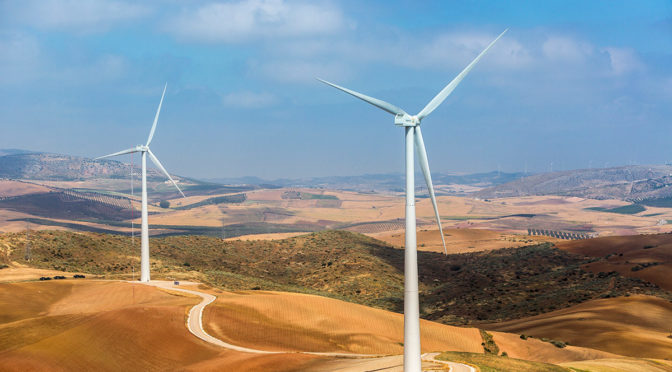In Camp de Tarragona, energy developers have presented 20 projects to build new wind farms. Sixteen are concentrated in Conca de Barberà (some shared with Anoia and La Segarra) and the rest in Baix Camp, in Vandellós-l’Hospitalet de l’Infant. The Renewable Energy Report, which makes a first screening of viability, has given eight the green light and has rejected eight.
The latter are Montañas de los Muntanyes dels Burgans, Planelles and Motarro II, in Tivissa-Vandellòs; i Puig de Gaigs, Pla Serè, Pla del Codony, Serra Guixeres and Conca de Barberà IV in different municipalities of the Conca de Barbera. There are also in this region three parks of eleven and twelve mills, of 66 and 72 MW of power, which are being processed through ministerial channels.
The parks that have received a favorable agreement from the Conference for their location are Vandellós, Trilla, Seré, Ondana, Portezuela, Planes de Almenara, Redondo and Conca de Barberà III. There are 63 new wind turbines that will produce more than 280 MW of power. Currently, in these two regions of Tarragona, together with Priorat and Alt Camp, there are 240 wind turbines in operation, spread over 14 wind power plants.
The collegiate body also evaluates six new solar park projects, of which three have received a favorable siting report. They are projected in Vila-seca and Constantí (Tarragonès) and l’Arboç (Baix Penedès) in little more than 35 hectares. There are three more parks pending to pass the procedure in Vila-seca (Tarragonès), Cambrils (Baix Camp), and Sarral (Conca de Barberà).
The environmental groups of Conca de Barbera and Baixa Segarra denounce the overcrowding that this area suffers and assure that the wind energy model implemented in the last decade has not entailed any socioeconomic development. “It has not stopped the depopulation, but has helped. When it rains, the power goes out immediately, there has been no improvement with a continuous supply of quality ”, laments Jordi Pasalaigua, member of Sobirania Energètica de la Baixa Segarra. In his view, the wind power plants have not created jobs either, as promised by the operating companies, since they have subcontracted the maintenance of the facilities.
Pasalaigua also points out that Decree 16/2009 does not regulate the financial compensation received by landowners or city councils for the installation of wind turbines and criticizes that behind the companies there are oligopolies that only seek “great benefits.” «Both the Conca de Barbera, as the Terra Alta, the Baix Ebre or the Segarra, are oversaturated areas. There are many areas of Catalonia that are also good and no project has been presented, as in Montseny, ”the ecologist pointed out. For this reason, he denounces that the Government has not planned better the country’s wind energy map. «These large companies are looking for cheap sun – which is agricultural – little social opposition in depopulated areas with small nuclei. With the decree, the Generalitat has told the promoter companies to present the projects where, how and when they want ”, he completes.
Likewise, the member of Sobirania Energètica de la Baixa Segarra highlights the inconsistencies of the Renewable Energy Conference due to the fact that it has knocked down the Seré and Codony parks, and instead, has given the green light to the Seré Plan. These are three plants located in the municipalities of les Piles, Conesa and Santa Coloma de Queralt, one next to the other. «We do not know the criteria that the Presentation uses to give the viable location or not. In two it has ruled that it was unfeasible for reasons of biological connectivity and in the other not, “he argues.
Therefore, the environmentalists plan to present allegations to the preliminary projects and questions to the Department of Territory and Sustainability to find out if old administrative authorizations have been renewed. Nor do they rule out more forceful actions, such as roadblocks to show their opposition to the new wind farms projected in the territory.
80 MEUR of income
For its part, the Wind Energy Association of Catalonia, EolicCat, points out that the wind farms that the Renewable Energy Board has declared viable will generate income of 78.9 million euros for the municipalities of Camp de Tarragona and Terres de l’Ebre where they are located. install as well as the creation of 68 direct workplaces, in addition to those derived from the construction of the parks – about 270 throughout Catalonia-. The figure includes the taxes collected by the municipalities (ICIO, IAE and BICE) and the millions of euros corresponding to the rental of the land where the wind turbines are installed, during the 25 years of useful life they have. The entity breaks down that the income will be 31.3 million euros in Ribera d’Ebre, 25.6 in Conca de Barberà, 13.8 in Terra Alta, 4.6 million euros in Baix Camp and 3 , 6 in the Baix Ebre.


